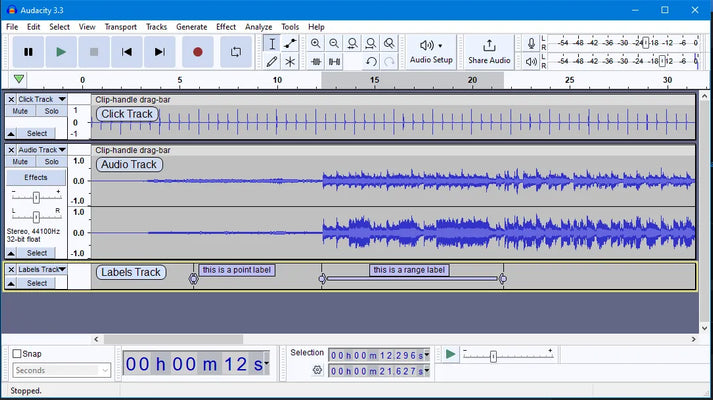Before And After Mixing And Mastering
Overview
What is mixing and mastering?
Mixing and mastering are two essential processes in producing music and audio. Mixing involves combining multiple audio tracks and elements to create a balanced and cohesive sound. It includes adjusting the levels, panning, and applying effects to enhance the individual tracks. Mastering, on the other hand, is the final step in the music production process. It focuses on optimizing the overall sound of the mixed tracks, ensuring consistency across different playback systems, and preparing the audio for distribution. Both mixing and mastering are crucial in achieving a professional and polished sound.
Importance of mixing and mastering
Mixing and mastering play a crucial role in the production of high-quality audio. Mixing involves balancing the levels of individual tracks, applying EQ and compression, and adding effects to create a cohesive and balanced sound. Mastering, on the other hand, focuses on enhancing the overall sound, optimizing the dynamic range, and preparing the final audio for distribution. By investing in professional mixing and mastering services, artists can achieve a polished and professional sound that stands out.
Critical differences between mixing and mastering
One of the critical differences between mixing and mastering is the stage at which they are performed in the music production process. Mixing involves adjusting the levels, panning, and applying effects to individual tracks to create a balanced and cohesive sound. On the other hand, mastering focuses on enhancing the overall sound of the mixed tracks and preparing the final audio for distribution. While mixing is more detailed and intricate, mastering is the final polish that brings the entire mix together and ensures it sounds great on all playback systems. Both processes are crucial in achieving a professional and polished sound for your music.
Preparation
Organizing tracks and files
Once you have recorded all the necessary audio tracks for your project, it is essential to organize them properly. This includes naming each track clearly and descriptively to quickly identify them during mixing. Additionally, it is recommended to create a folder structure that reflects the different sections of your project, making it easier to locate and manage files. Organizing your tracks and files saves valuable time and ensures a smooth mixing and mastering workflow.
Cleaning up audio recordings
After organizing the tracks and files, the next step in the preparation process is cleaning up the audio recordings. This involves removing any unwanted noise, such as background hiss or hum, and addressing any issues with the audio quality. Standard techniques for cleaning up audio recordings include noise reduction plugins, equalization, and spectral editing. Ensuring that the audio recordings are clean and free from distractions makes it easier to achieve a high-quality mix and master.
Setting up the mixing environment
Once all the tracks and files are organized, it is essential to properly set up the mixing environment. This includes calibrating the studio monitors to ensure accurate playback, positioning the speakers at the correct angle and height, and treating the room acoustically to minimize reflections and resonances. Additionally, it is crucial to use high-quality audio cables and eliminate any potential sources of interference, such as electrical devices or noisy computer fans. Engineers can make accurate decisions and achieve a more precise and balanced mix by creating an optimal mixing environment.
Mixing Process
Balancing the levels of individual tracks
After organizing the tracks and cleaning up the audio recordings, the next step in the mixing process is balancing the levels of individual tracks. This involves adjusting the volume of each track to ensure they blend well together and create a cohesive sound. It is important to carefully listen to each track and change to achieve a balanced mix. Additionally, panning techniques can develop a sense of space and width in the mix. The foundation for a well-mixed and polished sound is established by adequately balancing the levels of individual tracks.
Applying EQ and compression
After balancing the levels of individual tracks, the next step in the mixing process is applying EQ and compression. EQ (equalization) allows you to adjust the frequency balance of each track, enhancing or reducing specific frequencies to create a more balanced and cohesive sound. Compression, on the other hand, helps control the dynamic range of the audio, making softer sounds louder and louder sounds softer. By using EQ and compression effectively, you can shape the tonal balance and dynamics of the mix, bringing out the best in each element and ensuring a more professional and polished sound.
Adding effects and automation
After balancing the levels and applying EQ and compression, the next step in the mixing process is adding effects and automation. Effects such as reverb, delay, and chorus can create depth and space in the mix, while automation allows for precise control over volume, panning, and other parameters. By carefully selecting and applying these tools, engineers can shape the sound and bring out the desired emotions in the music. Additionally, automation can help create dynamic and engaging mixes by adding movement and variation to different song sections. It is essential to use effects and automation tastefully and in moderation, ensuring they enhance the overall mix without overpowering or distracting from the main elements of the music.
Mastering Process
Enhancing the overall sound
After balancing the levels and applying EQ and compression, the next step in mastering is enhancing the overall sound. This involves subtle adjustments to the frequency balance, stereo width, and depth of the mix to ensure it sounds cohesive and polished. Additionally, mastering may involve adding final touches, such as harmonic excitement or subtle saturation, to enhance the perceived loudness and warmth of the audio. The goal is to create a professional and commercially viable sound that translates well across different playback systems and platforms.
Optimizing the dynamic range
Optimizing the dynamic range is a crucial step in the mastering process. It involves adjusting the loudness of different elements in the mix to ensure the overall sound is balanced and impactful. This can be achieved by using compression techniques to control the peaks and increase the perceived volume of quieter sections. Additionally, limiting can be applied to prevent any clipping or distortion. By carefully managing the dynamic range, the final audio will have a more professional and polished sound, allowing it to stand out in various listening environments.
Preparing the final audio for distribution
Once the mixing process is complete, it's time to prepare the final audio for distribution. This involves exporting the mixed audio file and ensuring it is in the appropriate format and quality for the intended distribution platforms. It is essential to check the final audio for any clipping or distortion and make necessary adjustments. In addition, metadata such as track titles, artist names, and album information should be added to the audio file. Finally, listening to the final audio on various playback systems is crucial to ensure it translates well across different devices and environments. By adequately preparing the final audio for distribution, you can ensure that your music sounds its best and reaches your audience in the highest quality possible.
Conclusion
The importance of professional mixing and mastering
Professional mixing and mastering can make a significant difference in the final quality of a music production. Skilled audio engineers have the expertise and tools to enhance the mix's clarity, balance, and depth, ensuring that every element of the song is heard in the best possible way. They also know how to optimize the dynamic range and prevent distortion during mastering. By entrusting your music to professionals, you can achieve a polished and professional sound that stands out in today's competitive music industry.
Achieving a polished and professional sound
To achieve a polished and professional sound, paying attention to every detail during the mixing and mastering process is essential. This includes carefully balancing the levels of each track, applying precise EQ and compression to shape the sound, and adding effects and automation to enhance the overall mix. Optimizing the dynamic range and preparing the final audio for distribution are crucial steps in achieving a high-quality result. By following these steps and utilizing the expertise of professional mixers and masterers, artists can ensure that their music sounds its best and stands out in a competitive industry.
Final thoughts on the before and after effects
In conclusion, the before and after effects of mixing and mastering are significant in achieving a polished and professional sound. The individual tracks are transformed into a cohesive and well-balanced mix by applying various techniques such as balancing levels, using EQ and compression, and adding effects and automation during the mixing process. The mastering process further enhances the overall sound by optimizing the dynamic range and preparing the final audio for distribution. Recognizing the value of professional mixing and mastering is essential to achieve a high-quality and commercially viable product.











